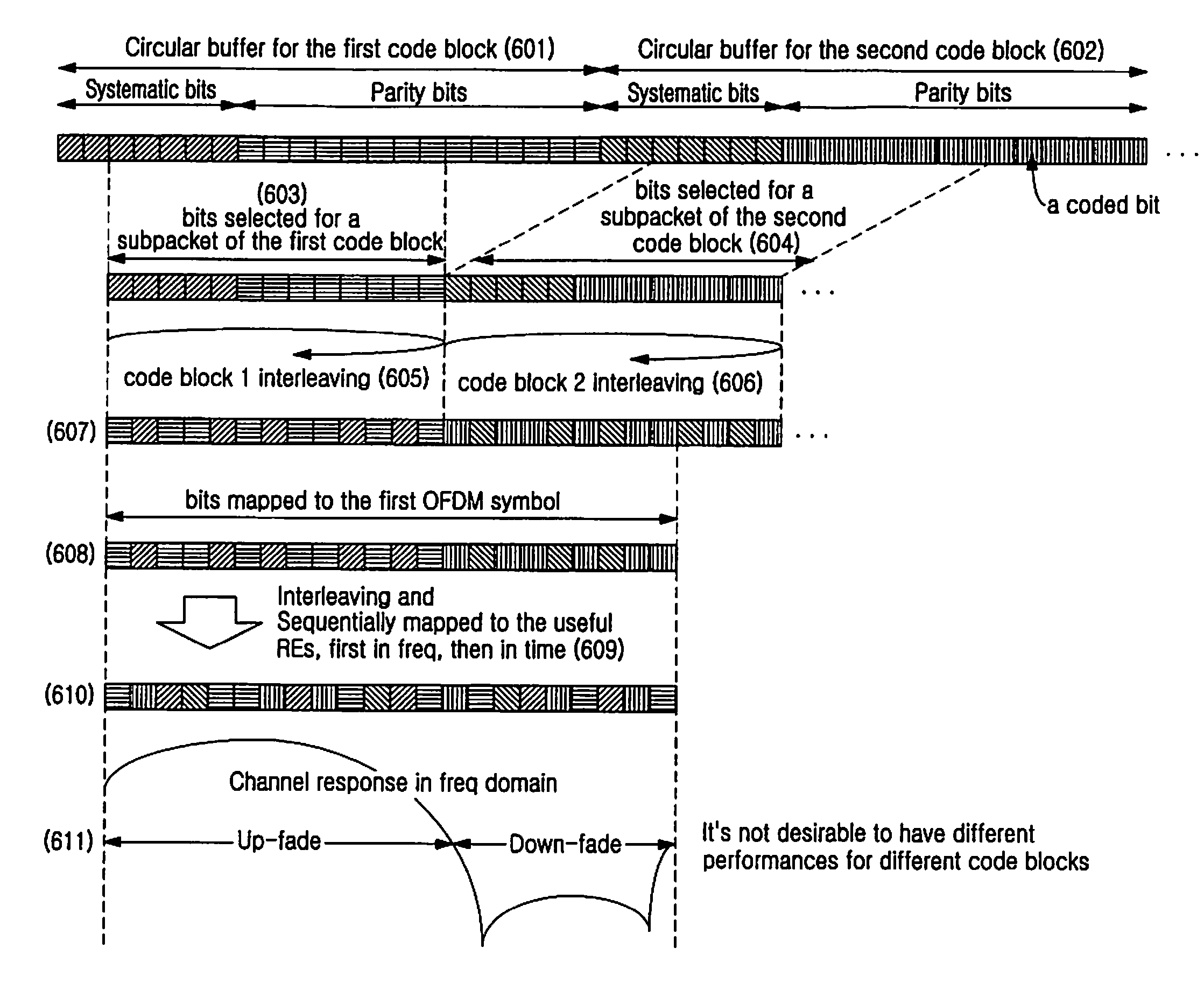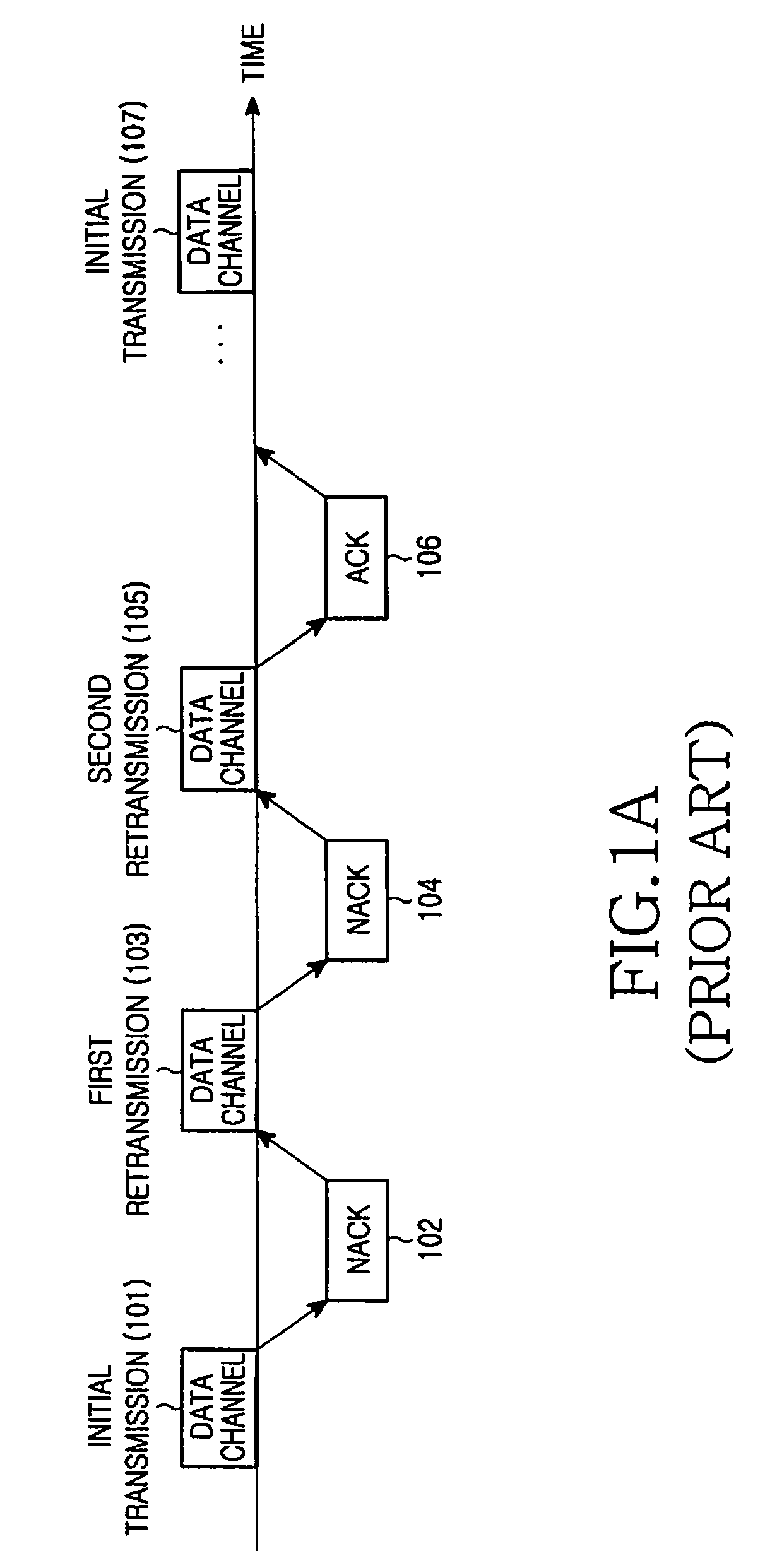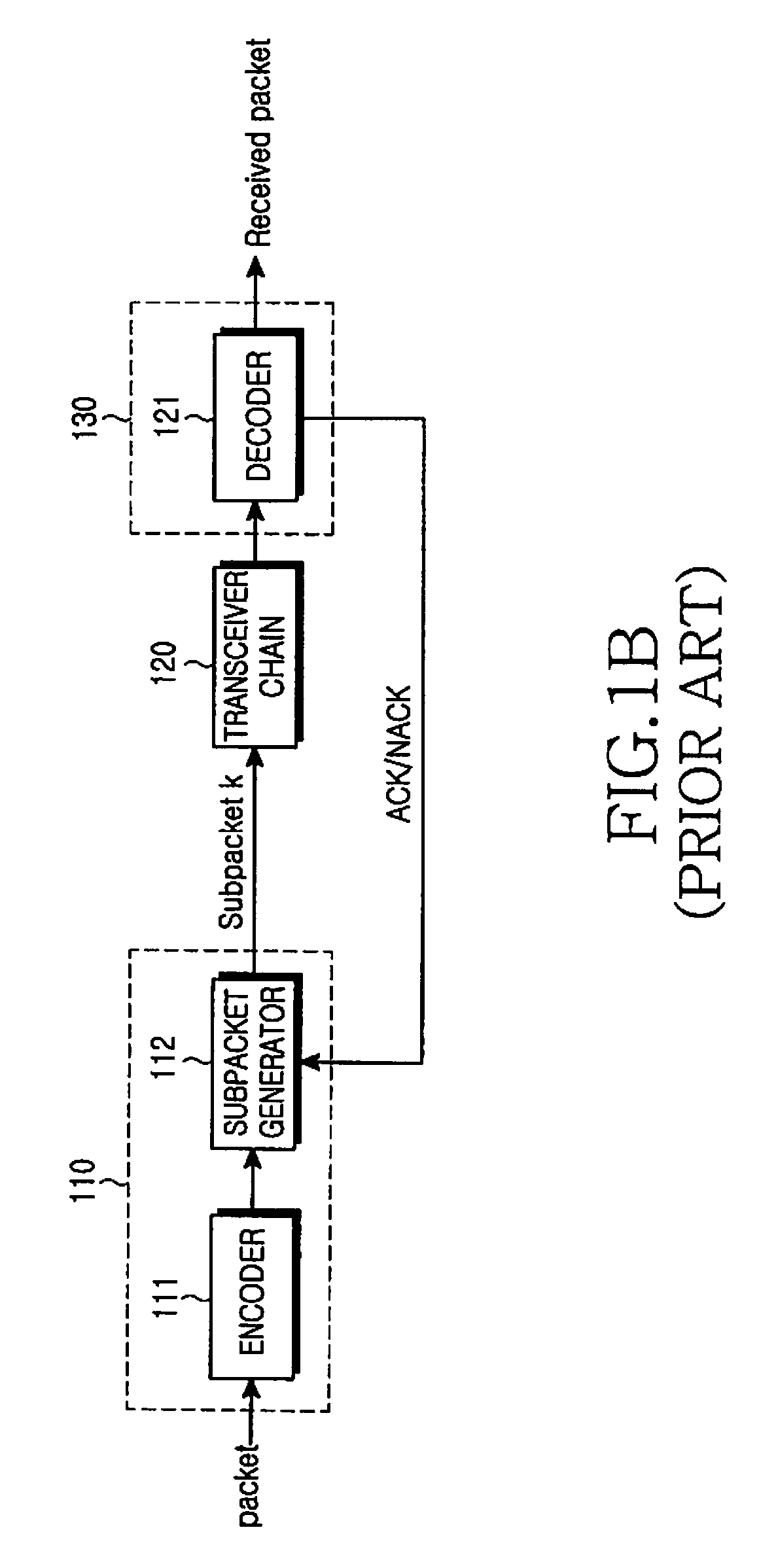Apparatus and method for channel-interleaving and channel-deinterleaving data in a wireless communication system
a wireless communication system and data channel technology, applied in the direction of multi-frequency code system, transmission path division, pulse technique, etc., can solve the problems of insignificant data retransmission and unnecessary resource consumption, and achieve the effect of preventing unnecessary retransmission
- Summary
- Abstract
- Description
- Claims
- Application Information
AI Technical Summary
Benefits of technology
Problems solved by technology
Method used
Image
Examples
first embodiment
[0057]FIG. 4 illustrates a control operation for channel interleaving according to the present invention.
[0058]Referring to FIG. 4, a transmitter segments an information bit stream into one or more code blocks according to a rule in step 401. For example, if a Base Station (BS) is to transmit 10,000 information bits to a Mobile Station (MS) and uses a turbo encoder, the turbo encoder typically does not encode the 10,000 bits at one time because turbo coding of too much information at one time remarkably increases the decoding complexity of a receiver. Therefore, when a large number of information bits such as the 10,000-bit data are to be transmitted, they are segmented into two equal parts, i.e. each having 5000 bits and the 5000-bit streams are turbo-encoded separately.
[0059]Depending on system implementation, one information bit stream is segmented into a plurality of code blocks in a different manner. Hence, the present invention is not limited to a particular rule for dividing ...
second embodiment
[0065]FIG. 5 illustrates a control operation for channel interleaving according to the present invention.
[0066]Referring to FIG. 5, the transmitter segments an information bit stream into one or more code blocks according to a rule in step 501. Step 501 can be performed in the same manner as step 401 of FIG. 4. In step 502, the transmitter turbo-encodes the one or more code blocks independently and buffers the coded bits in circular buffers. The circular buffers can be configured in the manner illustrated in FIG. 2. Then the transmitter generates subpackets from the circular buffers in a method in step 503.
[0067]As described before with reference to FIG. 2, the subpackets are configured with successive coded bits selected from the circular buffers. Then the transmitter determines whether coded bits to be transmitted in one OFDM symbol are to be selected from a plurality of code blocks in step 504. If the coded bits are to be selected from a plurality of code blocks, the transmitter ...
third embodiment
[0097]FIG. 14 illustrates a control operation for channel interleaving according to the present invention.
[0098]Referring to FIG. 14, a transmitter segments an information bit stream into one or more code blocks according to a rule as in FIG. 4 in step 1401. In step 1402, the transmitter turbo-encodes the one or more code blocks independently and buffers the coded bits in circular buffers. The circular buffers are configured as illustrated in FIG. 2. Then the transmitter generates subpackets from the circular buffers in a method in step 1403. As described before with reference to FIG. 2, the subpackets are configured with successive coded bits selected from the circular buffers.
[0099]The transmitter determines whether the number of code blocks transmitted in a TTI is larger than that of OFDM symbols available for data transmission in the TTI in step 1404. If the answer is affirmative, symbol-based interleaving is performed in step 1405.
[0100]If the answer is negative in step 1404, i...
PUM
 Login to View More
Login to View More Abstract
Description
Claims
Application Information
 Login to View More
Login to View More - R&D
- Intellectual Property
- Life Sciences
- Materials
- Tech Scout
- Unparalleled Data Quality
- Higher Quality Content
- 60% Fewer Hallucinations
Browse by: Latest US Patents, China's latest patents, Technical Efficacy Thesaurus, Application Domain, Technology Topic, Popular Technical Reports.
© 2025 PatSnap. All rights reserved.Legal|Privacy policy|Modern Slavery Act Transparency Statement|Sitemap|About US| Contact US: help@patsnap.com



